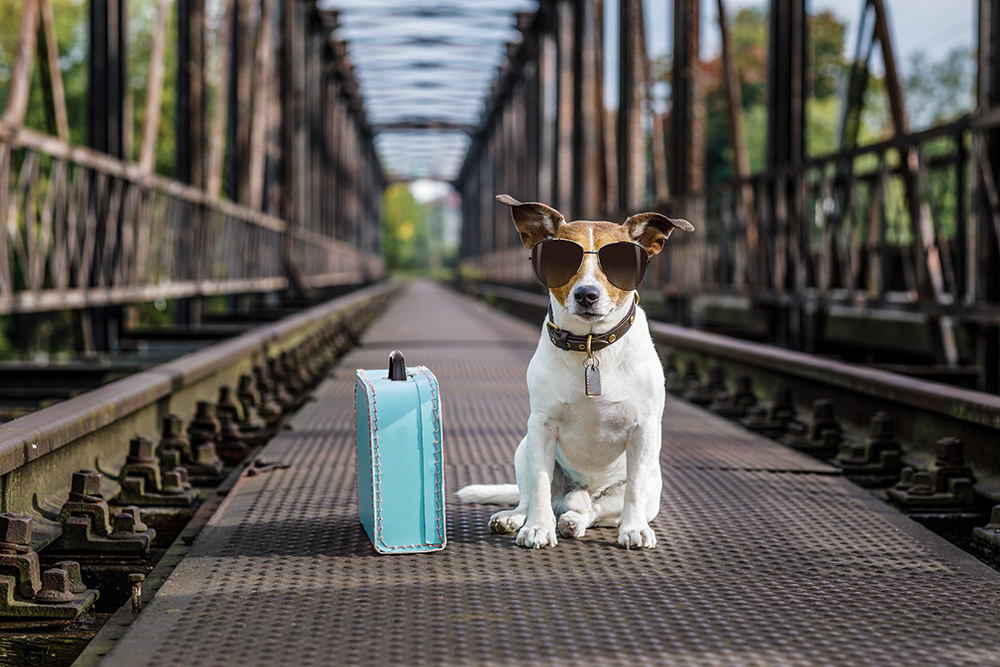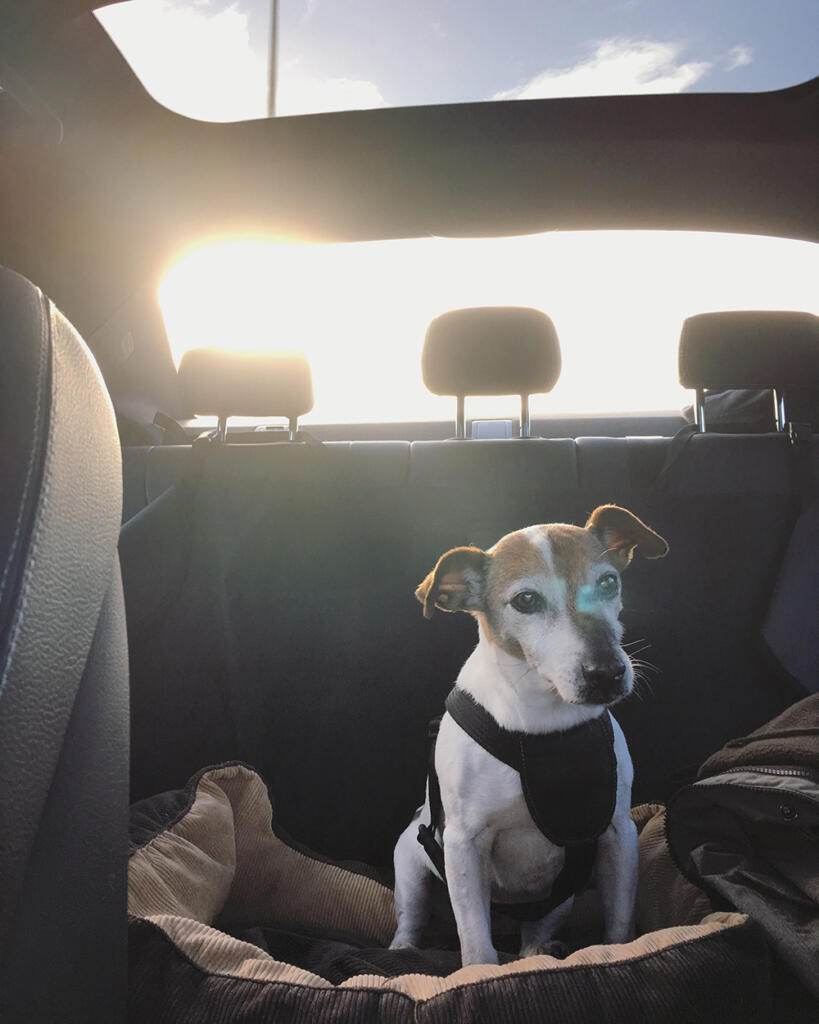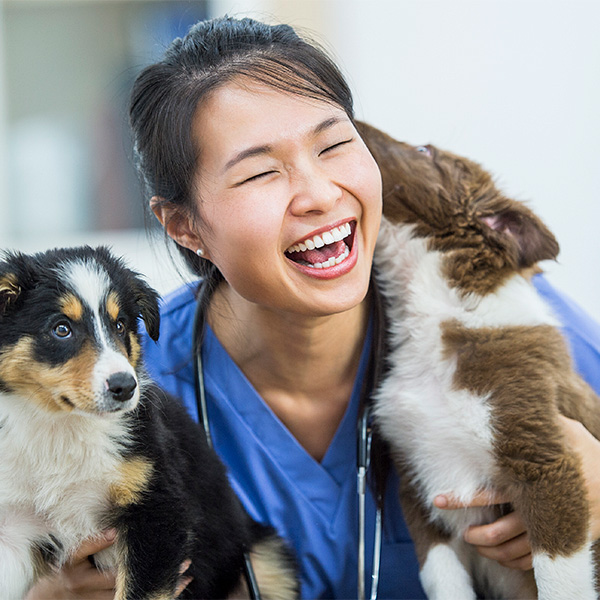Pets And Travel During Holidays

As summertime approaches, so do holiday plans. Whether you plan to bring your pet along on your vacation or leave your pet at home, we have some tips and thoughts for each option.
Travelling Together
What could be better than going on holidays with your pet? You are together with your fur-buddy, you don’t have to worry about how your pet is doing without you, and you’re making new memories.
The downside is that many pets don’t travel well. There is always some stress associated with travel, and many pets are anxious in new situations. Most importantly, the logistics of keeping your pet physically safe while flying or driving must be addressed.
Flying
Different airlines have different requirements. A flight for a dog that is larger than the allowed cabin kennel size (which differs depending on the airplane/airline) carries risks, especially if there are stops or transfers on the itinerary. It is not impossible that pets in kennels may find themselves waiting on the tarmac in sub-zero temperatures in winter, or dangerously high temperatures in summer. These risky delays may be difficult to avoid, especially if you are travelling during the holidays, so consider working with a company that specializes in arranging safe animal travel for you; search online under “animal transport” or “animal cargo” to find one that suits your needs.
Sedation
A big question is always whether to sedate pets prior to them travelling in cargo. As always, with any medical issue there are pros and cons. In our emergency room we’ve been presented with dogs that did not tolerate the sedation well. If sedation is going to be given, trazodone is one of the safer medications, but please discuss which drug is appropriate for your dog with your family veterinarian. I would also strongly recommend that you test the sedative at a time well before your travel date so you can observe the effects it has on your pet. Animals that are too sedate can’t control their own body temperature, which may drop dangerously low, or they may be so sedate that they risk aspiration if they vomit. For this reason, do not feed for 4-6 hours before the flight, but always allow access to water.
Regulations
Often, customs will not allow any food to be taken across the border, no matter how hard you plead. If your pet requires a specific diet, find out in advance where you can source that food at your destination so your pet doesn’t go hungry. You must also ensure that your pet is vaccinated and that you have all the records to show at the border.
Driving
While you have more control if you’re travelling by car or by train, you still need to consider whether your pet does well on long trips, and remember that high temperatures are always a danger to pets in cars.
Long ago, I travelled to the Okanagan with my first Doberman. Halfway through the trip I realized that while she had always been ok in the car, she wasn’t tolerating a long trip. She became so anxious and was panting so hard that despite frequent stops we could not get her to settle. I had to find a local vet clinic to get her some sedatives even though I had never had to give her any before. She was sedated for the better part of two days. I subsequently travelled with my little MinPin who did well with the driving, but it was so hot in the Okanagan in the middle of summer that we had to change our itinerary to keep her safe and comfortable. Even traveling in the car with the air conditioning maxed out, it was so warm that it was hardly relaxing. Every emergency veterinarian can tell you stories of dogs that have died of heat stroke after travelling in a car without their owners ever realizing that their pet was overheating.
Accommodations
We learned from these experiences. Future trips were better timed (not in the middle of the summer), with less expectation of what would be accomplished, and we did more advance research of the accommodations. In addition to finding pet-friendly accommodations, you need to know whether you can leave your pet alone or if you must be in the room at all times while your pet is there, and be sure that there are appropriate areas to walk your dog.
Leaving your pet behind
The easiest option is often to have someone look after your pet in their own home, or board your pet. Their routine will not change a lot and as long as the person caring for them is responsible, observant and has experience with animals, this is probably the best for your pet.
Boarding facilities include pet hotels, boutique kennels, veterinary clinics and regular kennels. Whatever you choose, make sure that you research them well, look at reviews online and visit first to be sure that it suits your pet’s needs. Most of these will require up to date vaccinations – most specifically rabies and bordetella (kennel cough).
If you do leave your pet with a sitter who knows your dog or at a kennel, provide them with numbers for your veterinarian, pet insurance and emergency contacts that can make decisions about your pet’s health in your absence. Make sure to give them a list of medication and any idiosyncrasies that are particular to your pet. For example, is your pet fastidious about the litter box being very clean? Do they like small snacks? Will they have an upset stomach if given table scraps? Also, provide information about what to expect in terms of behaviour. For example, is this a dog or a cat who eats but without much interest in the morning, so that skipping food for the day would not be unusual, versus a dog that devours everything and lives to have meals so that skipping one meal would be a big deal.
Extra special pets
Some pets have such special needs or are so sensitive or medically compromised that neither travelling with them nor leaving them in the care of others is reliably safe for them. It may be that some or all of the family have to resign themselves to a “staycation” for the sake of these delicate babies.
Whatever your situation, taking some time to think through the issues in advance will help both you and your pet avoid some of the more common problems associated with managing pets during the travel season.



